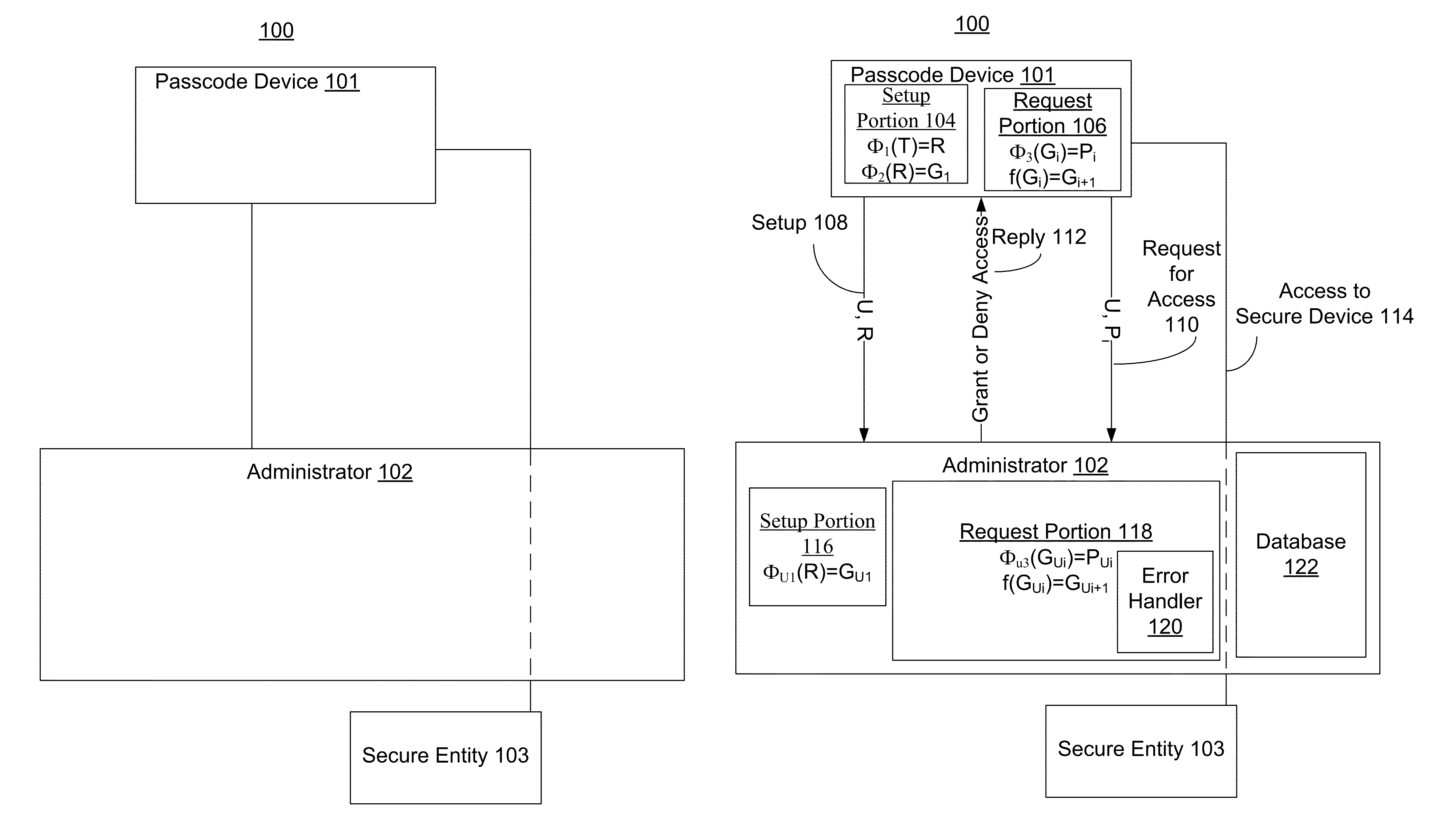One-time passcodes with asymmetric keys
a technology of asymmetric keys and passcodes, applied in the field of one-time passcodes with asymmetric keys, can solve the problems of theft of information related to securid products, massive breach of security division's securid products, and many customers scrambling to figure ou
- Summary
- Abstract
- Description
- Claims
- Application Information
AI Technical Summary
Benefits of technology
Problems solved by technology
Method used
Image
Examples
Embodiment Construction
[0091]FIG. 1A is a block diagram of an example of a system 100. System 100 includes a passcode device 101, an administrator 102, and a secure entity 103. In other embodiments system 100 may not have all of the components listed above or may have other components instead of and / or in addition to those listed above.
[0092]System 100 is an example of a system in which the security of a secure entity is kept by requiring a user to submit a passcode (e.g., a password) in order to gain access to the secure entity. The term “user” refers to someone that has access to passcode device 101. The user may use passcode device 101 to gain access to a secure entity. Any sequence of bits (which may represent any string of symbols) may be used as a passcode. In some cases, the passcode may be directly transmitted without human intervention to the administrator, so the sequence of bits may not have a visual display in standard formats such as ASCII, Unicode, and so on. For example, the first sequence ...
PUM
 Login to View More
Login to View More Abstract
Description
Claims
Application Information
 Login to View More
Login to View More - R&D
- Intellectual Property
- Life Sciences
- Materials
- Tech Scout
- Unparalleled Data Quality
- Higher Quality Content
- 60% Fewer Hallucinations
Browse by: Latest US Patents, China's latest patents, Technical Efficacy Thesaurus, Application Domain, Technology Topic, Popular Technical Reports.
© 2025 PatSnap. All rights reserved.Legal|Privacy policy|Modern Slavery Act Transparency Statement|Sitemap|About US| Contact US: help@patsnap.com



